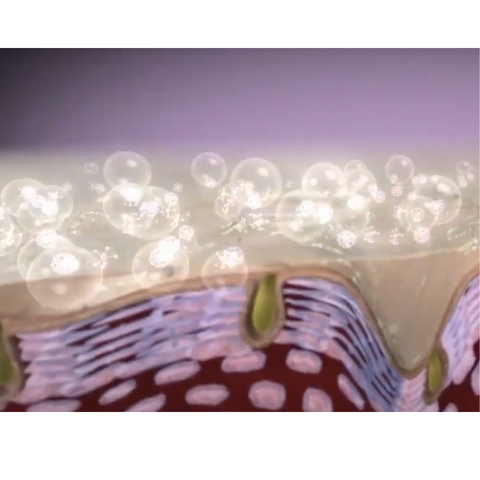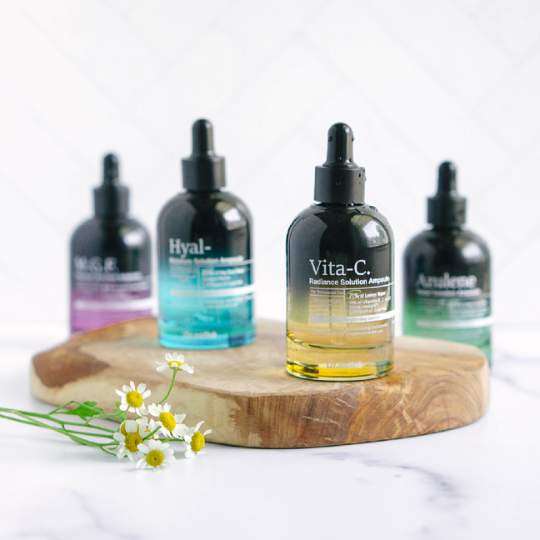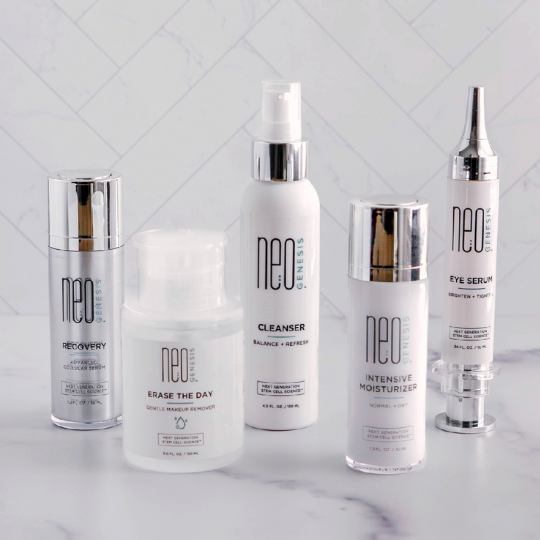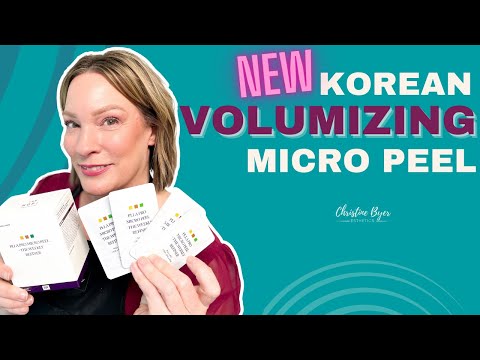- Poly-L-lactic acid, also referred to as PLLA, is a biodegradable, biocompatible bio-stimulator.
- As a bio-stimulator, PLLA promotes collagen production to smooth and plump aging skin.
- Invasive PLLA applications, like PLLA threads and injectables, may incur several safety risks.
- Topical PLLA applications, such as Korean skincare products, are safer and equally effective.
The idea of a nonsurgical facelift is nothing short of mesmerizing, isn’t it? No anesthesia, no extensive recovery period — just a noninvasive treatment so fast and fuss-free that some refer to it as “the lunchtime lift.” Well, while that idea might sound great in theory, there’s much more to these nonsurgical facelifts, which are made possible by Poly-L-lactic acid (PLLA) thread lifts and facial injectables, than meets the eye.
PLLA was used as part of suture material in the medical world for more than three decades before it became a trending Korean skincare ingredient in recent years. Though it was originally designed to promote skin renewal, there are potential PLLA injection side effects that all patients should know before treatment. Here’s my licensed master esthetician’s take on PLLA safety, including topical alternatives!
Poly-L-Lactic Acid: What is PLLA and How Does it Work?

Poly-L-lactic acid, commonly referred to as PLLA, is a polymer of lactic acid — the same chemical your body produces in your muscle cells and red blood cells. In the early 1990s, researchers synthesized PLLA for use in medical sutures. By 2004, the U.S. Food and Drug Administration approved PLLA as a biocompatible bio-stimulator to treat subcutaneous fat loss beneath the surface of the skin.
The magic of PLLA lies in its ability to stimulate collagen production at the source, smoothing lines in the skin and naturally plumping areas of volume loss. Pretty soon, word about PLLA entered the world of esthetics, where it was approved in both suture (thread) form and as a facial injectable to tighten and lift the skin. Today, topical PLLA is also a wildly popular powerhouse anti-aging ingredient in Korean skincare.
The way PLLA works is unlike any other ingredient you’ve tried before. When placed directly into the skin via threads or injectables, PLLA tightens upon treatment and continues to promote collagen production as it degrades over time. When applied topically, PLLA skincare products penetrate deep into the hair follicles, where they send a constant message to produce collagen and provide structural support to the skin.
Going Deeper on Internal PLLA Applications
PLLA treatments can be broken into two categories: internal (invasive) applications and topical (noninvasive) applications. Let’s dive into the world of internal PLLA applications, which include both PLLA injections and PLLA thread lifts, as well as the potential safety risks of each option!
Sculptra Injectables

Sculptra is a gel-like injectable. Although it’s often referred to as “PLLA filler,” Sculptra is not a dermal filler, it is a bio-stimulator. True dermal fillers, such as Juvéderm, contain ingredients like hyaluronic acid to add volume to the face. Sculptra PLLA injections, on the other hand, only contain ingredients that prompt the body’s natural collagen production process to slowly add volume over time.
Despite its original medical purpose, Sculptra PLLA injectables can still have several unwanted side effects, including subcutaneous papules and nodules that appear as lumps beneath the skin. Back in the early 2000s, the frequency of PLLA injection side effects occurred in up to 44% of cases. Today, that amount has decreased to just 0.4%. While researchers call this a “favorable risk-benefit ratio,” it's still a risk.
PLLA Thread Lifts

PLLA thread lifts have been in rotation since the late 1990s, when they were used to lift ptotic tissues — a medical term for sagging or collapsing skin. Over the years, a variety of PLLA sutures have hit the market, all designed to pull and tighten the skin around the eyes, mouth, and jawline for a lifted effect. Once installed internally beneath the skin, PLLA threads have a lifetime of two years or more.
What this means is that PLLA threads remain in place for approximately two years, giving the skin that “lunchtime lift” and promoting collagen production. However, after a few years, the threads will dissolve into organic chemicals like glucose, lactate, and water. Potential side effects include visible sutures, bruising, and discomfort, as well as more serious safety risks, such as snapping sutures, allergic reactions, and infections.
Keeping It Topical with PLLA Skincare Products

If the thought of PLLA injections makes you cringe, I totally understand! While internal PLLA sounds fantastic in theory, the potential risks are enough for me to advise you to explore the world of topical PLLA instead. Topical products are formulated with tons of skin-loving ingredients, like peptides and antioxidants, that complement the benefits of PLLA as it stimulates collagen production in the hair follicles.
My personal favorite PLLA-rich skincare line is House of PLLA, formerly SculPLLA. Formulated with the highest grade Poly-L-lactic acid on the market, House of PLLA boasts noticeable results after continued use of just 28 days. You can even check out the before and after results using House of PLLA products!
My favorite House of PLLA products to include in a topical PLLA skincare routine include:
- HOP+ CaviPLLA+O2 Multi-Serum provides building blocks for skin cells to function optimally.
- HOP+ Promoter Collagen Gel stimulates cell growth in tissues and promotes collagen production.
-
HOP+ Promoter Repair Cell Moisturizer repairs damaged tissue to fight signs of aging and deeply hydrate.

-
HOP+ PLLA Pro Micro Peel: The Weekly Refiner and Gold+ Mask helps reverse sun damage and retexturize uneven skin.
FAQ's
Q: Are PLLA injectables and thread lifts permanent solutions?
No, PLLA injectables and thread lifts are not permanent. While PLLA threads typically last for approximately two years before dissolving, PLLA injectables may require maintenance treatments to sustain results over time.
Q: Can HOP+ PLLA skincare products provide comparable results to internal PLLA applications?
While PLLA skincare products offer a noninvasive alternative to injectables and thread lifts, they may not provide the same level of dramatic results. However, consistent use of high-quality PLLA-rich skincare, such as House of PLLA products, can still yield noticeable improvements in skin texture, tone, and firmness. create. They create panoramic collagen production for natural results and all over healthy skin.
Q: What are the potential side effects of PLLA skincare products?
PLLA skincare products are generally considered safe for topical use, but individuals with sensitive skin may experience mild irritation or redness. It's always recommended to perform a patch test before incorporating new skincare products into your routine and to consult with a dermatologist if you have any concerns.
Q: Can I exfoliate when using topical House of PLLA products?
Yes, but use GENTLE exfoliants to avoid stripping the PLLA building in your skin. PLLA works by building up in the skin to boost collagen production. Stripping it out with harsh exfoliants will prevent the building process. I don't recommend using deep chemical peels, microdermabrasion, or abrasive scrubs while building PLLA.
HOP has two amazing exfoliators that contain PLLA. You can safely peel and volumize with these two PLLA-formulated products.
HOUSE OF PLLA® HOP+ Pilleo Skin Prep
HOP+ PLLA Pro Micro Peel
Both are specifically designed to work in partnership with PLLA products.
Get the Benefits of PLLA, Stress-Free
Let’s face it: We all love the sound of a nonsurgical facelift. However, nonsurgical procedures do not always equal noninvasive treatments. Both internal applications of PLLA can still feel like a major decision. Fortunately, my 23+ years as a licensed esthetician have taught me that reliable skincare can serve as a fantastic stand-in for PLLA injectables and threads. Also, apply them with ease of mind. They are very safe when applied topically

To make your PLLA journey even easier, join me in the Christine Byer Beauty Club, my corner of the internet for all things skincare, savings, and support. Sign up for your 14-day FREE preview today! If you don’t find value in your membership, you can cancel within 14 days at no charge and no hassle.














